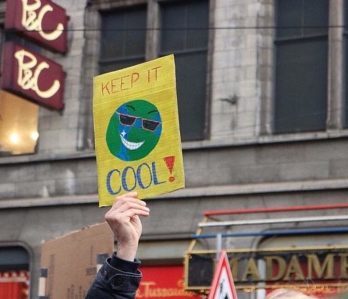COP26 is an event where leaders from all over the world come together to fight climate change. This conference was first held about 30 years ago. The United Nations then requested to sign a climate treaty that should limit greenhouse gas emissions. The countries that have signed this climate treaty meet annually to discuss the progress and challenges of the climate crisis. This year, world leaders gathered in Glasgow (UK) from October 31 to November 12. In this blog you can read all the agreements made during the COP26 conference.
What does the COP26 climate agreement say?
Climate agreement adjusted at the last minute
Whether the climate summit in Glasgow would still come to an agreement for the coming years, was still exciting. More than 24 hours after the official deadline, an agreement was finally reached. In the afternoon of Saturday, November 14, there was broad agreement on the drafted rules, but India did not agree to a drafted passage. This passage called for phasing out coal. However, according to India, rich countries owe their prosperity to coal. And that is why the country also wants the right to profit from coal.
After hours of discussions around 7 pm on Saturday 14 November, a compromise was finally reached: the final climate agreement is no longer about a ‘phase out’ of coal, but a ‘phase down’ of coal. The difference? Phase out refers to the complete ban on coal and phase down coal is about phasing out.
Reaching the top breakthroughs
In the final agreements, the leaders call on countries to accelerate efforts to improve the climate. The aim is to come up with sharper climate promises next year. What exactly does this mean? At the next climate summit in Egypt, the ‘big emitting countries’ will have to present new plans for economic alignment with the Paris Climate Agreement .
Phasing out fossil fuels
The terms ‘coal’ and ‘fossil fuels’ are finally mentioned in the negotiation text, after more than 30 years of climate conferences. The Netherlands has joined countries that will stop investing in foreign fossil energy projects before the end of 2022. The phasing out of these investments has already been discussed, but the signing has accelerated the process.
Stimulating green techniques
More than 40 countries have reached an agreement on the development and availability of green technologies. The goals of these 40 countries are:
- Green energy must become the cheapest and most reliable type of energy;
- Electric vehicles are the new standard and must therefore be affordable and accessible;
- Steel must be produced emission-free or ‘near zero’;
- Hydrogen must become affordable and available worldwide;
- The most attractive option for farmers must be sustainable agriculture.
Green transport in 2040
Several agreements have been made with regard to the subject of ‘green transport’. The Netherlands, together with many other countries, stated that all trucks that are sold new must run on clean energy by 2040. This is seen by world leaders as a major step: freight traffic accounts for a large share of greenhouse gas emissions . This arrangement was discussed in COP26 as there are currently enough technological developments that can contribute to the realization.
In addition to driving vehicles, freight traffic also includes shipping. To this end, the Clydebank Declaration statement has been signed as a supplement to the work of the International Maritime Organisation. The signatory countries have thereby declared their ambition to support the green shipping corridors. This is done by facilitating emission-free shipping routes between two ports.
End deforestation within 10 years
An important breakthrough during COP26 is the measures taken to conserve forests and biodiversity. More than 100 countries – including forested countries such as Brazil and Russia – have signed a declaration that deforestation will end by 2030 at the latest. Many billions are being released to achieve forest restoration and sustainable agriculture.
Global warming
With the climate summit in Glasgow, the leaders wanted to keep global warming below 2 degrees. According to the Climate Action Tracker , global warming is at 2.4 degrees if we continue on the current course. Before COP26 agreements, it was estimated that 52.4 gigatons of greenhouse gases would still be emitted by 2030. With the signed declarations, the climate summit has ensured that these emissions are reduced to 42 gigatons. To keep warming below 1.5 degrees, emissions must fall to 26.6 gigatons by 2030.
What next after COP26?
The decisions taken at COP26 will help implement the Paris Climate Agreement in 2016. The phasing out of fossil fuels, the development of green technologies and the promotion of green transport are measures that ensure a step in the right direction. A critical note of these measures is that the countries themselves now have to translate them into national regulations and policy. Developing the measures is therefore a major challenge. The next United Nations climate conference, COP27, will focus on, among other things, financing to combat climate change.


